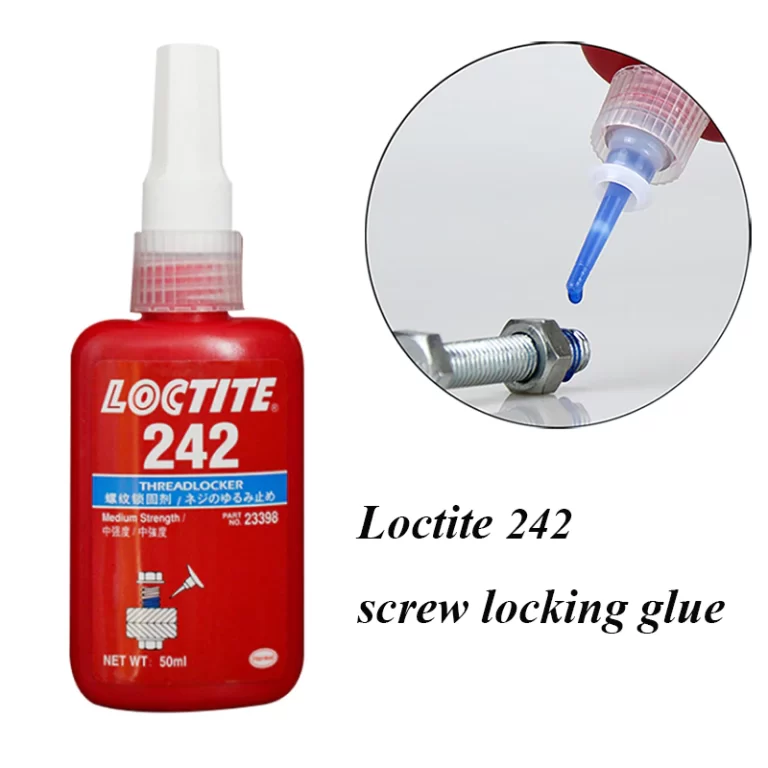Loctite 222 vs Loctite 222ms
Loctite 222 and Loctite 222ms are both low strength thread locking adhesives produced by Henkel, a German chemical company. The main difference between the two is the type of surface they are intended to be used on. Loctite 222 is a general purpose thread locker that works well on most metal surfaces, while Loctite 222ms is specifically designed for use on brass and bronze, with better resistance to chemicals and higher temperatures. Both are designed to secure bolts and nuts from loosening due to vibration, and both provide a low to medium strength hold.
Loctite 222 and Loctite 222ms are both low strength thread locking adhesives produced by Henkel, but there are some differences between the two.
Ultimately, the choice between Loctite 222 and Loctite 222ms will depend on the specific application and the properties of the surfaces to be bonded.
Loctite 222
Loctite 222 is a low strength thread locking adhesive produced by Henkel, a German chemical company. Here’s a detailed review and buying guide for Loctite 222:
Pros:
- Low strength hold: Loctite 222 provides a low to medium strength hold, making it ideal for applications where high strength is not necessary.
- Versatile: Loctite 222 can be used on a variety of metal surfaces, making it a versatile option for many applications.
- Prevents loosening: Loctite 222 helps to prevent bolts and nuts from loosening due to vibration, which is common in many industrial and mechanical applications.
Cons:
- Limited chemical resistance: Loctite 222 is not as chemically resistant as some other thread locking adhesives, so it may not be suitable for use in harsh chemical environments.
- May require heat for disassembly: To disassemble parts bonded with Loctite 222, heating the parts to 150°F (65°C) can often weaken the bond and allow for easier disassembly.
Buying Guide:
- Determine the intended use: Make sure Loctite 222 is suitable for the specific application and the surfaces to be bonded.
- Check the specifications: Make sure the specifications of Loctite 222 meet the requirements of the application, such as chemical resistance, temperature resistance, and strength.
- Choose the right size: Loctite 222 is available in various sizes, so choose the right size for the specific application.
Note: It is important to follow the manufacturer’s recommended guidelines and safety precautions, as well as any applicable local, state, and federal regulations.
Loctite 222ms Review
Loctite 222ms is a low strength thread locking adhesive produced by Henkel, a leading chemical company. This versatile adhesive is specifically designed for use on brass and bronze surfaces and offers a range of benefits for consumers. Here’s an interesting review of Loctite 222ms:
One of the standout features of Loctite 222ms is its chemical resistance. Unlike many other thread locking adhesives, Loctite 222ms can withstand harsh chemical environments, making it ideal for use in industries such as automotive, electrical, and plumbing. This resistance also makes Loctite 222ms a great option for use in household and DIY projects where chemicals are present.
Another advantage of Loctite 222ms is its high temperature resistance. This means that it can be used in high temperature environments, such as engines and boilers, without losing its effectiveness. This makes Loctite 222ms a durable and reliable option for many industrial and mechanical applications.
In addition to its chemical and temperature resistance, Loctite 222ms also provides a low to medium strength hold, which is perfect for applications where high strength is not necessary. This makes it a great choice for applications where ease of disassembly is a priority, such as maintenance and repairs.
One thing to note is that Loctite 222ms is specifically designed for use on brass and bronze surfaces. It may not be suitable for use on other types of surfaces, so it’s important to make sure it’s the right choice for your specific application.
Overall, Loctite 222ms is a reliable and versatile thread locking adhesive that offers a range of benefits for consumers. With its chemical and temperature resistance, as well as its low to medium strength hold, Loctite 222ms is a great option for a wide range of applications.
Pros:
- Chemical Resistance: Loctite 222ms has excellent chemical resistance, making it suitable for use in harsh chemical environments, such as in the automotive, electrical, and plumbing industries.
- Temperature Resistance: Loctite 222ms has a high temperature resistance, making it ideal for use in high temperature environments, such as engines and boilers.
- Low to Medium Strength Hold: Loctite 222ms provides a low to medium strength hold, which is perfect for applications where high strength is not necessary, and ease of disassembly is a priority.
- Versatile: Loctite 222ms can be used on brass and bronze surfaces, making it a versatile option for many applications.
Cons:
- Limited Surface Compatibility: Loctite 222ms is specifically designed for use on brass and bronze surfaces, and may not be suitable for use on other types of surfaces.
- Disassembly: To disassemble parts bonded with Loctite 222ms, heating the parts to 150°F (65°C) can often weaken the bond and allow for easier disassembly.
Differences Between Loctite 222 vs 222ms
Loctite 222 and Loctite 222ms are both low strength thread locking adhesives produced by Henkel, a German chemical company. However, there are some differences between the two adhesives:
- Surface Compatibility: Loctite 222 can be used on a variety of metal surfaces, while Loctite 222ms is specifically designed for use on brass and bronze surfaces.
- Chemical Resistance: Loctite 222ms has better chemical resistance than Loctite 222, making it more suitable for use in harsh chemical environments.
- Temperature Resistance: Loctite 222ms has a higher temperature resistance than Loctite 222, making it ideal for use in high temperature environments.
- Strength: Both Loctite 222 and Loctite 222ms provide a low to medium strength hold, but Loctite 222ms may offer slightly stronger bonding on brass and bronze surfaces.
In conclusion, while both Loctite 222 and Loctite 222ms are low strength thread locking adhesives, the main differences between the two are their surface compatibility, chemical resistance, temperature resistance, and strength. It is important to choose the right adhesive for the specific application and surface to ensure the best results.
General Guide to use Loctite 222 and Loctite 222ms
Here’s a general guide for using Loctite 222 and Loctite 222ms:
- Surface Preparation: Clean the surfaces to be bonded thoroughly and make sure they are dry and free from oil or grease.
- Application: Apply a small amount of adhesive to the threaded parts, taking care not to apply too much. The adhesive should cover the entire thread.
- Assembly: Assemble the parts within 5 minutes of applying the adhesive.
- Curing Time: Loctite 222 and Loctite 222ms will reach full cure in 24 hours. During this time, it is recommended to avoid applying excessive force or stress to the bonded parts.
- Disassembly: To disassemble parts bonded with Loctite 222 or Loctite 222ms, heating the parts to 150°F (65°C) can often weaken the bond and allow for easier disassembly.
Final Thoughts
In conclusion, Loctite 222 and Loctite 222ms are both low strength thread locking adhesives produced by Henkel. They offer a range of benefits for consumers, including chemical resistance, temperature resistance, and low to medium strength hold. However, there are some differences between the two adhesives, including surface compatibility, chemical resistance, temperature resistance, and strength.
Loctite 222 is a versatile option that can be used on a variety of metal surfaces, while Loctite 222ms is specifically designed for use on brass and bronze surfaces and offers better chemical and temperature resistance. It’s important to choose the right adhesive for the specific application and surface to ensure the best results.
Overall, both Loctite 222 and Loctite 222ms are reliable options for consumers looking for a low strength thread locking adhesive. Whether you’re working on a household DIY project, or an industrial application, these adhesives can help ensure that your parts stay securely in place.


